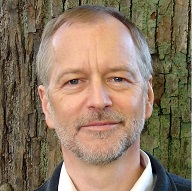
Institute of Biomedical Optics, University of Lüebeck, Germany
Free-electron-mediated modifications of biomolecules: from photodamage in nonlinear microscopy to intentional photomodification of cells and tissues
Abstract
Femtosecond laser-induced plasma generation is used surgically and may also cause photodamage in nonlinear microscopy. The irradiance threshold at which transient vapor bubbles in water are produced by single pulses is 20 times higher than the irradiance used for microscopy. However, photodamage in multiphoton microscopy already starts, when the irradiance is raised 1.5 times above the value used for autofluorescence imaging. The huge realm of low-density plasma effects between multi-pulse nonlinear imaging and single-pulse surgical regime is little explored. We provide a systematic overview over irradiance and radiant exposure dependence of laser effects in this regime. Surgery by single-pulses relies on the disruptive effect of nm to µm sized transient cavitation bubbles. The threshold is here determined by a critical temperature above which a phase transition occurs. Series of low-energy fs pulses induce free-electron mediated modifications and finally disintegration of biomolecules. Bubble here contain non-condensable gas rather than water vapor. The underlying process is a nonlinear chemical rate process, and threshold characteristics differ fundamentally from the single-pulse threshold. Below bubble threshold, photomodifications can be utilized to create corneal refractive changes suitable for non-ablative treatment of myopia and hyperopia. Photodamage in multiphoton microscopy was explored for various cell types and tissues using physical indicators enabling real-time-monitoring of the damage kinetics. We characterize the transition from unchanged tissue (emitting autofluorescence) to slightly changed tissue (hyperfluorescence), drastically changed tissue (plasma luminescence) and finally molecular disintegration leading to gas bubble formation. By plotting the threshold values in (irradiance, radiant exposure) space, we can clearly identify a “safe” region for nonlinear microscopy and separate it from regions for different types of photomodification.
Biography
Prof. Alfred Vogel is Team Leader and former Director of the Institute of Biomedical Optics (BMO), University of Luebeck, Germany. Hereceived the Ph.D. degree in Physics from University Goettingen in 1987, and the degree of Habilitated Doctor of Physics from the University of Luebeck, Germany, in 1999. Since 2010 he is also Adjunct Professor of Xiʼan Jiaotong University, PR China. Dr. Vogel is fellow of the Optical Society (OSA) and of SPIE. He has published over 90 peer-reviewed jounral articles and 51 proceedings papers. His published work has received over 12,000 citations with a h-index of 47. He holds 11 patents.
Dr. Vogel has made major experimental and theoretical contributions to the field of pulsed laser interactions with molecules, cells and biological tissues. He developed comprehensive theoretical frameworks for pulsed laser tissue interactions ranging from photochemical changes to ablation, and for controlled nonlinear energy deposition in transparent dielectrics.
He invented new technologies for imaging and characterization of plasmas, shock waves, cavitation bubbles, and ablation plume dynamics. His research encompasses surface ablation through linear absorption of ultraviolet and infrared laser pulses, ablation processes in a liquid environment such as in blood vessels or joints, as well as precise plasma-mediated ablation, surgery, and molecular modificationswithin nominally transparent materials such as ocular tissues and cells. His work in these areas hasled to innovative strategies for improving cellular micro/nano surgery, intraocular surgery,and refractive surgery.
Dr. Vogel served on the editorial board for the Journal of Biomedical Optics (2002-2019), served as associate editor of Optics Express (2006-2009), and as advisory editor of Biomedical Optics Express (2010-2019).
For more information or to schedule a meeting with the speaker, please contact Xandra Dvornikova.
Sponsored by the Berns Family Laser and Microbeam Program



